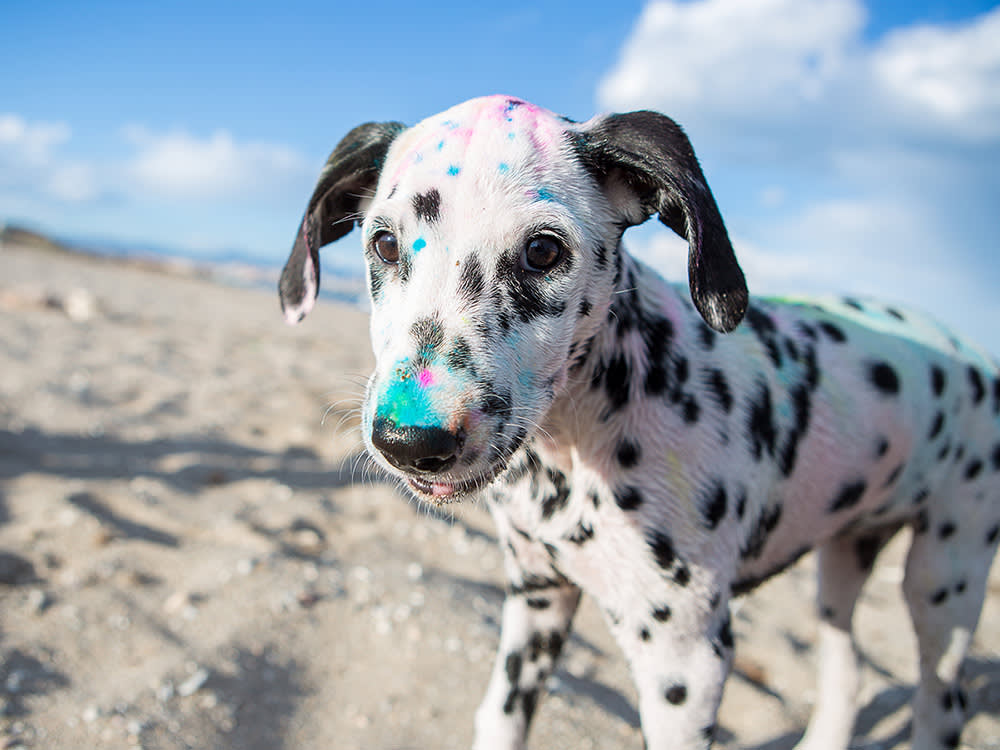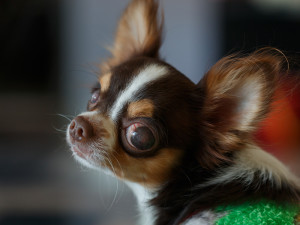Are Dogs Actually Color Blind?
It’s not all black and white.
Despite what you may have learned in school, dogs are not completely color blind — or at least, they’re not walking around in black and white like their life is an episode of I Love Lucy. Dogs do see coloropens in a new tab, but not the same way most people do. Studies show that color is actually pretty important to their vision and in many cases is even more important than brightness level. So, if they aren’t completely color blind, how do dogs perceive color?
Determining the Colors That a Dog Sees
It turns out that a dog’s color vision may be similar to people who have deuteranopia, better known as red-green color blindness. But without dogs having the language to tell us what they’re seeing, how did researchers determine this?
Scientists in Italy testedopens in a new tab a group of dogs by showing them a series of colored images depicting movement — in this case, a red running cat against a green background — in a way that is not detectable unless the colors of red and green can be distinguished. This one-of-a-kind study tested the color vision in dogs based on a modification of a test used in people, which allows a direct comparison of color blindness and color vision between the two species.
The reds and greens used were modeled after the test for red-green color blindness in people (something called Ishihara’s testopens in a new tab). You probably remember this test from school, in which green circles form the background of an image, such as the number “26,” which is made out of two different shades of red circles. Most people see the number easily, but to people with deuteranopia, the “6” is hidden, so they report seeing only a “2”.
Putting Dogs Through a Colorblind Experiment
Before this experiment on color blindness, scientists first tested which image they should use by assessing the dogs’ reactions to various black-and-white images. Ultimately, it was determined that an image of a running cat prompted more reactions from dogs than the other images (shocking, I know).
Then in the color blind study, dogs were shown a series of images of the cat in two shades of red — one that color blind people can detect and one they can’t. Dogs were also shown a series of animations using the shades of green in the background to make sure that any response was not due to the animation itself, but to the color differences in the images compared to the background. Another set of images was used as a control with a black cat on a white background.
The data collected measured how much the dog oriented with head, body, or eyes to the target of interest (the cat). Dogs were videotaped continuously and then scored for any of the following alert behavior patterns: ears up and forward, turning head from left to right, eyes wide open, forward body position, eye or ear directed toward the target, gazing at the target, head slightly lowered, paw raised, freezing, alert posture, and head tilt. Also, the total amount of time the dog spent looking at each image was recorded.
It’s a clever design because the dogs do not have to be trained to do this, allowing large numbers of dogs to be tested in a short time. Additionally, it frees the experiment from any troubles of reinforcement or motivation, typical of studies requiring a learned response.
Can Dogs See Red and Green?
Results show that dogs spent more time looking at (and were more alert to) the cat that can be seen by people with red-green color blindness and the black cat on a white background than at the cat that appears hidden to those with red-green colorblindness. This study supports the idea that dogs are indeed red-green color blind. So, if you’re thinking about getting a new toy for your pup, maybe consider getting them something blueopens in a new tab.







